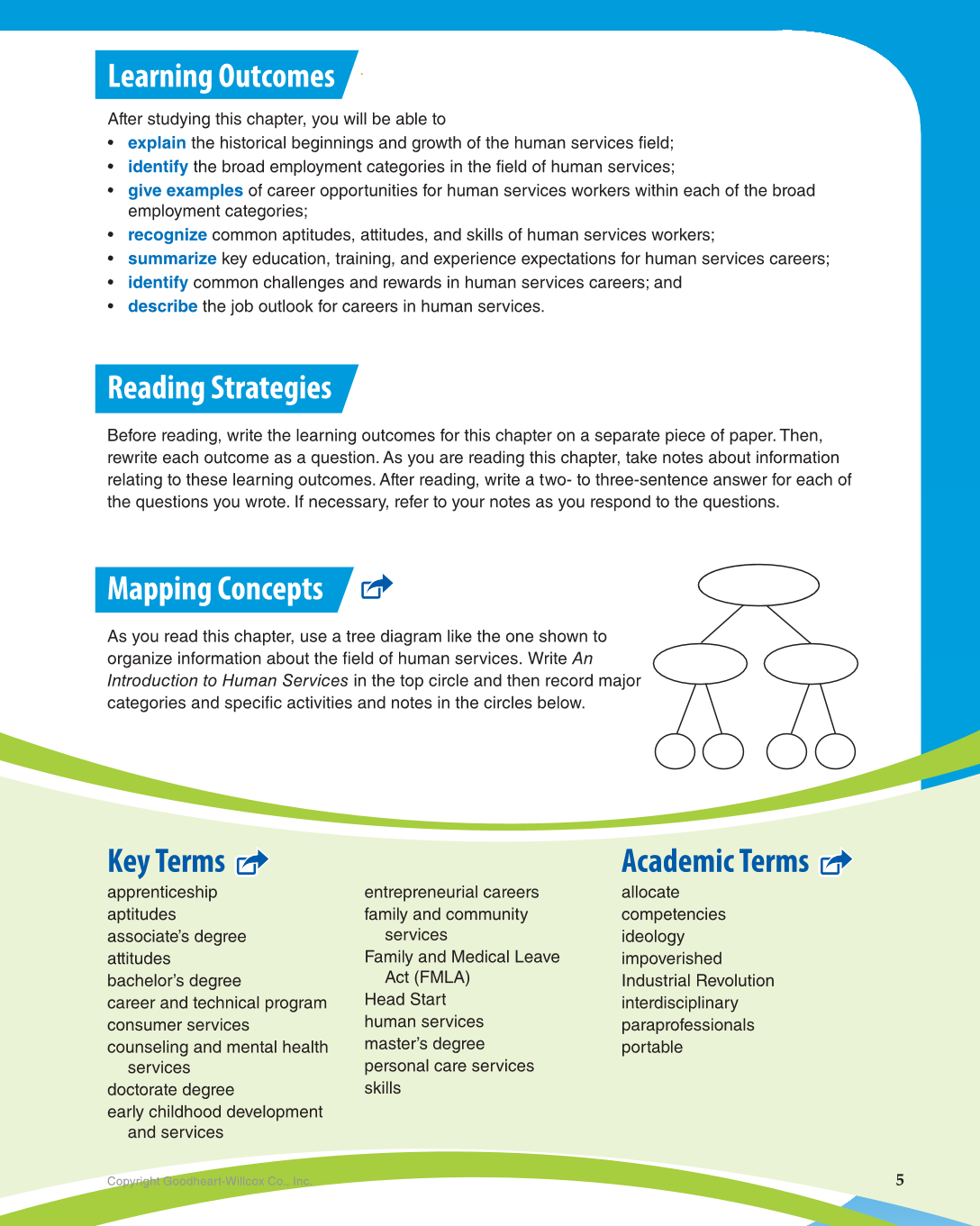Copyright Goodheart-Willcox Co., Inc.
5
Key Terms
apprenticeship
aptitudes
associate’s degree
attitudes
bachelor’s degree
career and technical program
consumer services
counseling and mental health
services
doctorate degree
early childhood development
and services
entrepreneurial careers
family and community
services
Family and Medical Leave
Act (FMLA)
Head Start
human services
master’s degree
personal care services
skills
Academic Terms
allocate
competencies
ideology
impoverished
Industrial Revolution
interdisciplinary
paraprofessionals
portable
Mapping Concepts
As you read this chapter, use a tree diagram like the one shown to
organize information about the field of human services. Write An
Introduction to Human Services in the top circle and then record major
categories and specific activities and notes in the circles below.
Reading Strategies
Before reading, write the learning outcomes for this chapter on a separate piece of paper. Then,
rewrite each outcome as a question. As you are reading this chapter, take notes about information
relating to these learning outcomes. After reading, write a two- to three-sentence answer for each of
the questions you wrote. If necessary, refer to your notes as you respond to the questions.
Learning Outcomes
After studying this chapter, you will be able to
• explain the historical beginnings and growth of the human services field;
• identify the broad employment categories in the field of human services;
• give examples of career opportunities for human services workers within each of the broad
employment categories;
• recognize common aptitudes, attitudes, and skills of human services workers;
• summarize key education, training, and experience expectations for human services careers;
• identify common challenges and rewards in human services careers; and
• describe the job outlook for careers in human services.
